Hair Transplant
Hair loss can affect just the hair on scalp or entire body. Although it’s more prevalent in older adults, excessive hair loss can occur in children as well.
It is normal to lose between 50 and 100 hairs a day. With about 100,000 hairs on your head, that small loss isn’t noticeable. New hair normally replaces the lost hair, but this doesn’t always happen. Hair loss can develop gradually over years or happen abruptly. Hair loss can be permanent or temporary.
It’s impossible to count the amount of hair lost on a given day. You may be losing more hair than is normal if you notice a large amount of hair in the drain after washing your hair or clumps of hair in your brush. You might also notice thinning patches of hair or baldness.
If you notice that you’re losing more hair than usual, you should discuss the problem with your doctor. They can determine the underlying cause of your hair loss and suggest appropriate treatment plans.
PRP therapy typically consists of three treatments in a 4–6 week period, with maintenance treatments every 4–6 months.
The most common cause of hair loss is hereditary male- or female-pattern baldness. If patient have a family history of baldness, they may have this type of hair loss. Certain sex hormones can trigger hereditary hair loss. It may begin as early as puberty.
In some cases, hair loss may occur with a simple halt in the cycle of hair growth. Major illnesses, surgeries, or traumatic events can trigger hair loss. However, your hair will usually start growing back without treatment. Hormonal changes associated with pregnancy, childbirth, discontinuing the use of birth control pills, and menopause can cause temporary hair loss.
Medical conditions that can cause hair loss include thyroid disease, alopecia areata (an autoimmune disease that attacks hair follicles), and scalp infections like ringworm. Diseases that cause scarring, such as lichen planus and some types of lupus, can result in permanent hair loss because of the scarring.
Hair loss can also be due to medications used to treat cancer, high blood pressure, arthritis, depression, and heart problems.
A physical or emotional shock may trigger noticeable hair loss. Examples of this type of shock include a death in the family, extreme weight loss, or a high fever. People with trichotillomania (hair-pulling disorder) have a compulsion to pull out their hair, usually from their head, eyebrows, or eyelashes. Traction hair loss can be due to hairstyles that put pressure on the follicles by pulling the hair back very tightly.
A diet lacking in protein, iron, and other nutrients can lead to thinning hair.
Persistent hair loss often indicates an underlying health issue and able to diagnose hair loss based on a physical examination and health history. In some cases, simple dietary changes can help, along with switching prescription medications.
If there is any sign of autoimmune or skin disease, biopsy from the scalp is to be done.This will involve carefully removing a small section of skin for laboratory testing. It’s important to keep in mind that hair growth is a complex process, so it may take time to determine the exact cause of your hair loss.
Medications will likely be the first course of treatment for hair loss. Medications generally consist of topical creams and gels that you apply directly to the scalp. The most common products contain an ingredient called minoxidil (Rogaine) and may recommend minoxidil in conjunction with other hair loss treatments. Side effects of minoxidil include scalp irritation and hair growth in adjacent areas, such as your forehead or face.
Oral medication finasteride (Propecia) is also prescribed for male-pattern baldness. Take this medication daily to slow hair loss. Topical minoxidil along with finasteride also available. Some men experience new hair growth when taking finasteride. Rare side effects of this medication include diminished sex drive and impaired sexual function.
There are things you can do to prevent further hair loss. Don’t wear tight hairstyles like braids, ponytails, or buns that put too much pressure on your hair. Over time, those styles permanently damage your hair follicles. Try not to pull, twist, or rub your hair. Make sure you have a balanced diet, and that you’re getting adequate amounts of iron and protein.
Certain beauty regimens can actually worsen or cause hair loss. If you’re currently losing hair, use a gentle baby shampoo to wash your hair. Unless you have extremely oily hair, consider washing your hair only every other day. Always pat the hair dry and avoid rubbing your hair.
Styling products and tools are also common culprits in hair loss. Examples of products or tools that can affect hair loss are blow dryers, heated combs, hair straighteners, coloring products, bleaching agents, perms, and relaxers. If you decide to style your hair with heated tools, only do so when your hair is damp or dry. Also, use the lowest settings possible.
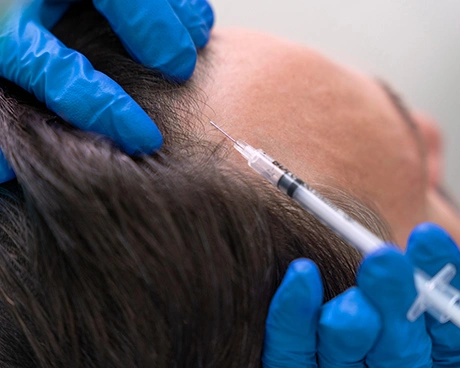
PRP therapy
PRP (platelet-rich plasma)therapy for hair loss is a three-step medical treatment in which a patient’s blood is drawn, processed, and then injected into the scalp.
PRP injections in to the hair loss area trigger natural hair growth and maintain it by increasing blood supply to the hair follicle and increasing the thickness of the hair shaft. This approach is combined with other hair loss treatment procedures or medications.
PRP therapy typically consists of three treatments in a 4–6 week period, with maintenance treatments every 4–6 months.
Most people can continue their daily activities following PRP injections. PRP injections are intended to promote growth of hair, you may not notice an immediate difference after receiving the injections. However, in several weeks or months, you may observe that the area is growing more hair.
Surgical treatment of hair loss – Hair transplant
What is hair transplant?
A hair transplant is a procedure in which a surgeon moves hair to a bald area of the head. The surgeon usually moves hair from the back or side of the head to the front or top of the head.
Who might benefit from a hair transplant?
Good candidates for a hair transplant include:
- Men with male-pattern baldness
- Women with thinning hair
- Anyone who has lost some hair from a burn or scalp injury
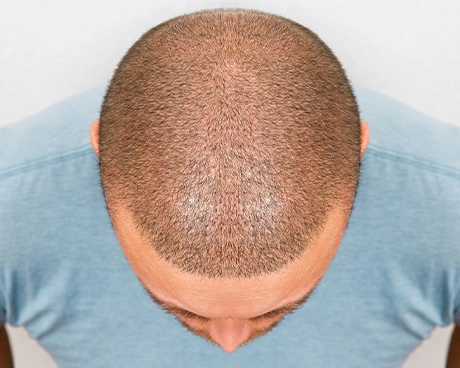
Hair replacement isn’t a good option for:
- Women with a widespread pattern of hair loss throughout the scalp
- People who don’t have enough “donor” hair sites from which to remove hair for transplant
- People who form keloid scars (thick, fibrous scars) after injury or surgery
- People whose hair loss is due to medication such as chemotherapy
PRP therapy typically consists of three treatments in a 4–6 week period, with maintenance treatments every 4–6 months.

What are the types of hair transplant?
There three types of hair transplant. FUT, FUE and Robotic hair transplant. Robotic hair transplant is an advanced technique in which robotic arm is used to help the surgeon in hair transplant. FUT is otherwise called as strip technique in which a strip of hair is harvested from the donor site and split into individual grafts and implanted into the recipient site. FUE is a technique in which the surgeon harvest individual follicle from the donor site and implant in the recipient site.
- Men with male-pattern baldness
- Women with thinning hair
- Anyone who has lost some hair from a burn or scalp injury
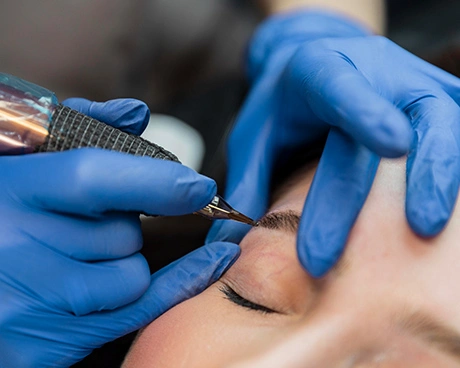
What is eyebrow and eyelashes hair transplant?
Eyebrow transplants are designed to restore growing hair to eyebrows that are overly thin, scarred, or completely missing.
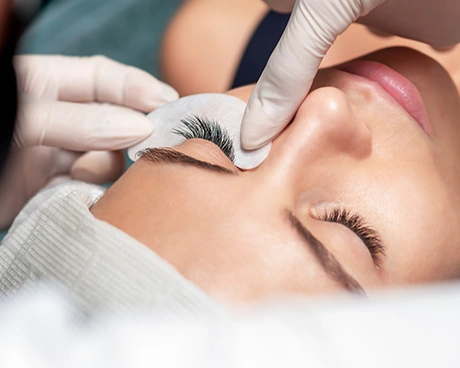
What is eyelashes hair transplant?
Done in patients who want fuller eyelashes. The procedure involves harvesting hair from the scalp and individual implantation of the hair follicles into the eyelid margin. “The lashes can become misdirected, causing ocular irritation, infection, and corneal scarring.”
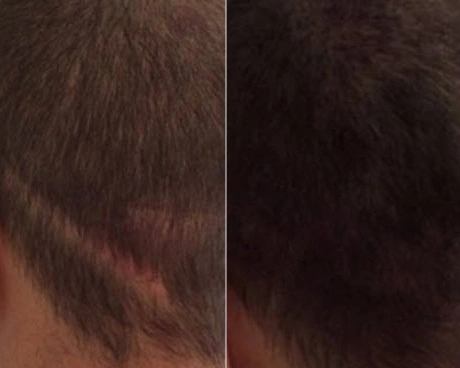
What is Hair transplant in scars?
Scars in the hair bearing area like moustache and beard is concealed by implanting hair in the scared area.
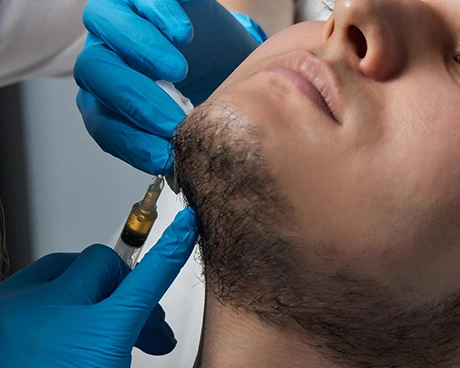
What is beard and moustache hair transplant?
Beard and moustache hair transplant is a procedure generally done on the men who suffer from spotty or patchy loss of hair from goatee, other parts of the beard, sideburns or moustache.
The absence of hair could be hereditary or due to surgical scars, burns or other types of accidents. For some males, keeping a thick beard or moustache is a symbol of manhood and strength, while for others it is mandatory requirement in their religion. Moreover, it is also a fashion statement among many young men.
What is done during the procedure?
It is a day care procedure. This procedure is done under local anaesthesia in the supervision of anaesthetist. First the hair follicle is harvested from the donor site and stored in cold saline. After completion of the harvest, hair follicle is implanted in the recipient site in artistic manner.
What method of hair implant is advantageous and why?
FUE and FUT both carries its own advantages. In FUE, there is no visible scar in the donor site. But the chance of damage to the hair follicle is more when compare to FUT. In FUT, high follicular unit graft yields and high-quality grafts. Grafts are also less fragile than with FUE. FUT leaves a long, linear scar at the site where the donor strip is harvested. So it requires a longer recovery time as compared to FUE.
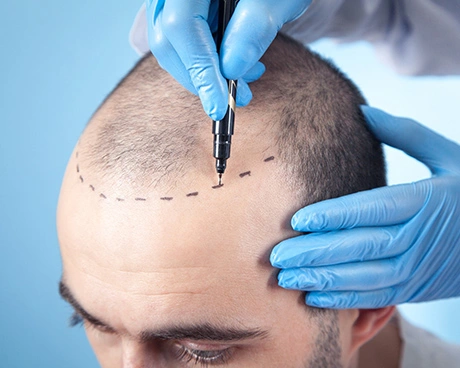
Side effects from a hair transplant are usually minor and clear up within a few weeks. They can include:
- Bleeding
- Infection
- Swelling of the scalp
- Bruising around the eyes
- A crust that forms on the areas of the scalp where hair was removed or implanted
- Numbness or lack of sensation on the treated areas of the scalp
- Itching
- Inflammation or infection of the hair follicles, which is known as folliculitis
- Shock loss, or sudden but typically temporary loss of the transplanted hair
- Unnatural-looking tufts of hair
Patient needs to take medications following hair transplant surgery, such as:
- Pain medication
- Antibiotics to reduce your risk of infection
- Anti-inflammatory medications to keep swelling down
Most people can return to work several days after surgery.
It’s normal for the transplanted hair to fall out two to three weeks after the procedure. This makes way for new hair growth. Most people will see some amount of new hair growth eight to 12 months after surgery.
Many doctors prescribe minoxidilor the hair growth medication finasteride to improve hair regrowth. These medications also help slow or stop future hair loss.
Yes. Hairs in the beard, chest and pubic hairs also used for hair transplant. In persons withinadequate donor hairs in the head, these hairs are used for hair transplant to cover the bald area.
The absence of hair can be due to genetics, prior electrolysis or laser hair removal, over-plucking, thyroid or other hormonal abnormalities, or trauma due to surgery, burns or because of accidents.
The donor hairs from the scalp which, when transplanted into the eyebrows, continue to grow for a lifetime and therefore need to be trimmed typically once a month.
This procedure typically involves the placement of 50 to as many as 200 hairs into each eyebrow, depending upon the existing amount of hair and the desired size and density.
This is a very delicate procedure, requiring perfect placement of these hairs into very small incisions that are angled at just the right direction and positioned to mimic natural growth. The use of all-microscopically dissected grafts allows their placement into the smallest possible incisions so as to minimize scarring and damage to already existing hairs.
The transplanted hairs fall out at around 10 to 14 days, then start to regrow at three months, where they will continue to grow for a lifetime.
Full beard may need 2,500 follicles for good result.
About two to three weeks after the beard transplant surgery, the donor hair will all fall out and the roots take hold. The patient can shave his new beard as if it were normal hair, and it will grow back.